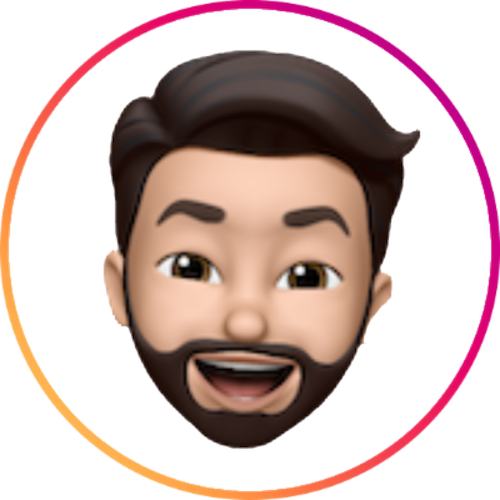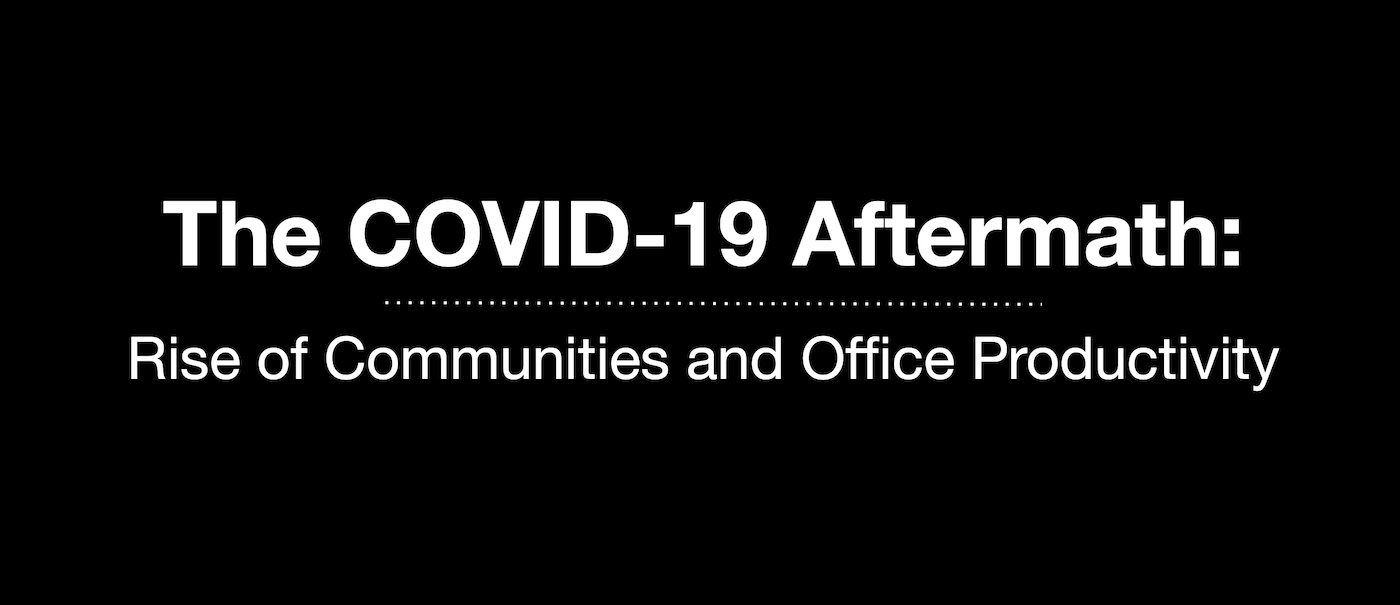
COVID-19 Aftermath: Rise of communities and office productivity
Reading Time: 7-10 minutes
This is an extension of the talk I gave on e-learning platform iBicocca on May 19th, 2020. It’s not complete and cannot substitute the 1-hour talk in terms of content and detail.
Preface
SARS-CoV-2, the virus that’s responsible for the novel coronavirus disease, better know as COVID-19, has surely changed our lives.

One way to look at the COVID-19 pandemic is to see it narrated by TIME’s journalists. Below, you can see three covers that talk about the virus. Thing is, only the first two are about the 2020 pandemic, and the third is from 2017, including an articles written by Bill Gates about How to keep the world safe.
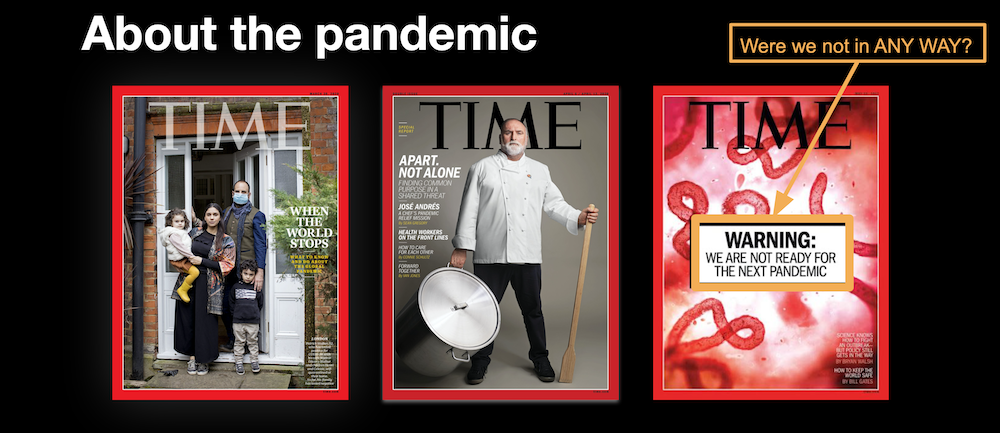
Well, if we got to be honest, we were not ready for this pandemic. Certainly, not from a sanitary point of view. We could argue that no one could expect a disease that would spread faster that SARS or MERS. We’re talking about levels not seen in the 21st century. The nearest epidemic like this dates back to 1968: the Hong Kong flu, with a death tool estimated to have been anywhere from 1 to 4 million people globally.
Of course, I do not know what it’s been like to be in a pandemic in the 60s, but what I do know is that the reproduction rate (i.e. the rate at which the virus infected people) was lower than the SARS-CoV-2. We could say that this is caused by the characteristics of the virus, but densification and globalisation are two other major causes that can enable a virus to spread more easily.
The fact is, that we were actually more prepared than in previous times, but not from a sanitary point of view, nor from a sociological one - not from a political one, surely. We had the technology ready to make a change in all the aspects of our lives.
Content and streaming
Let’s take the most evident example of all: video streaming. It seems like a futile example to make, but the ability to actually do something when stuck at home (such as finishing the entire Netflix catalogue, watching all pro players stream Fortnite plays or playing all the games queued for months or years) has been the best medicine for non-positive people in quarantine. Event the World Health Organisation recommended playing and watching videos as a way to decompress and escape reality for a while (though this info isn’t anywhere to be found now).
And people have been escaping reality, as data shows. Below is an analysis published by StreamElements and Arsenal.gg in April, that tracks content on Twitch, Facebook Gaming, YouTube Gaming and Mixer, mostly gaming streaming platforms.
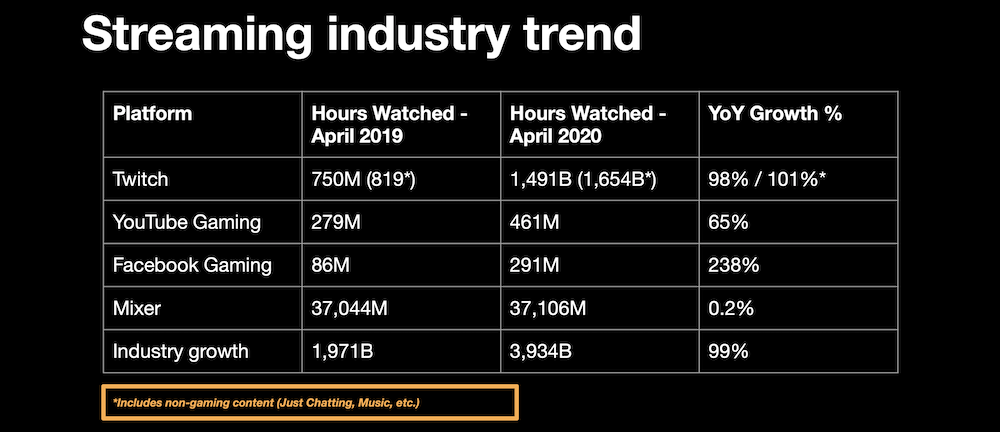
The evidence is a surge in video content fruition of all types, but if we look closer, we can see that the biggest jump was made by content outside of gaming, on platforms that mainly host gaming content. Why is that?
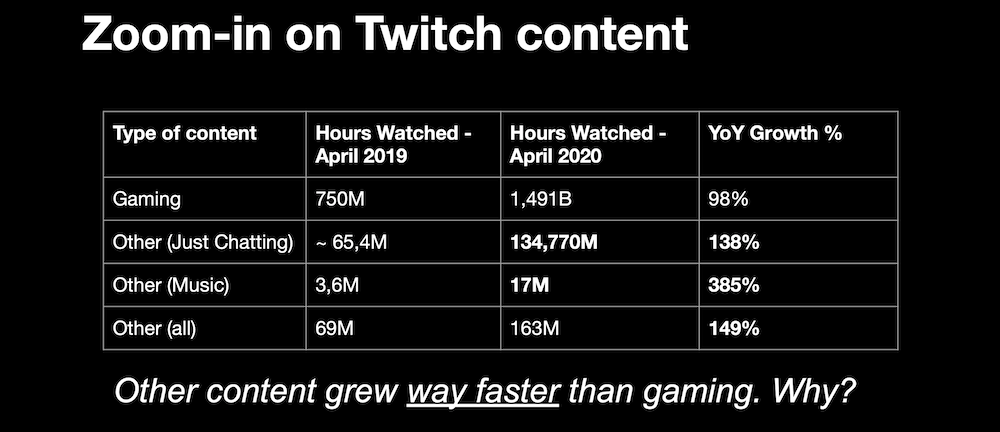
As wee see, there’s been an incredible 149% jump year-over-year, lead by the Just Chatting and Music categories. The first category includes all things talking: talk shows, simple chatting about random topics. The second one is about music performances, that are surely hosted on streaming platforms to compensate the lack of physical tours. If the ‘Music’ category is somewhat predictable to think it may jump in time like these, the same cannot be said about ‘Just Chatting’. Why are people enjoying watching are people talking random all day long?
Wandering on the internet
I wandered on the internet for a few weeks, in search of the pattern that connected people who enjoyed watching nothing in particular. Then I saw Animal Talking, a talk show hosted by video game journalist Gary Whitta, on Animal Crossing: New Horizons. I started watching a few minutes and then I got completely captivated by the format. I almost didn’t care about what was said by the host and the invitees, but I found myself really focused on the crowd-y place. I was looking at big-head avatars with strange outfits, laughing, clapping and wandering around the set that was, actually, the house in Gary Whitta’s island in the game. I felt cozy, not thinking about anything else than those laughs and those cute avatars.
Then, while I surfed for new memes on Reddit, I found some live streamings about people doing very simple things on a roll. Reddit Live lets a user create a stream that includes a countdown: if the stream gets upvotes, comments, cheers or tips, the countdown gets set back for a few seconds. A person could go on for hours, if people keep coming and interacting with it. I really got attracted by a guy that was playing table tennis against a wall. He was all sweat-y, like he had been going on for hours. And people kept coming and telling him to go on for a walk, or to incite him. There, I saw an ephemeral community being created the moment that guy created the live stream. A community that will vanish once the live stream is over, but that may meet again in other (virtual) places.
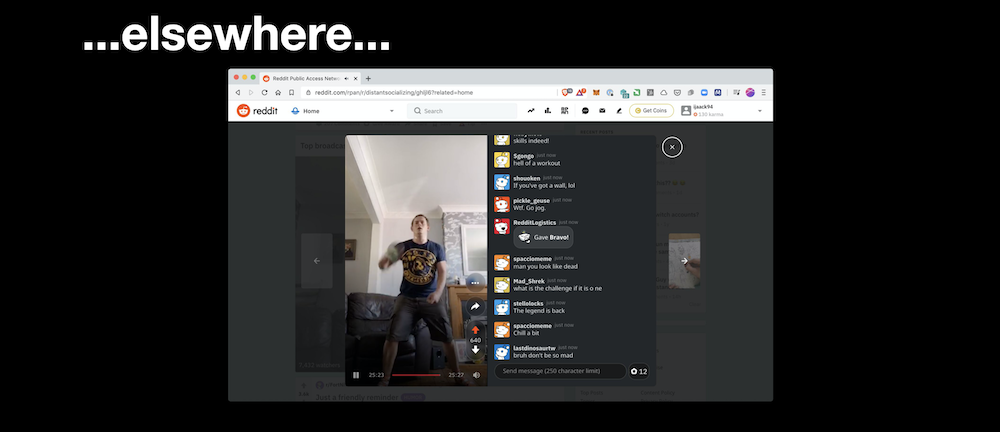
Last but not least, a few weeks ago I started playing Fortnite to combat boredom, lack of sleep, and to forget the fact that I could not see and be with my girlfriend, just few kilometers away, due to the strict lockdown that Italy was in. I started playing with my 13-year-old cousin, that has walked me through all the tricks and strategies needed to play and win. And then, as I became more and more Fortnite-dependent, Epic Games (the game’s developer) announced that singer Travis Scott would perform a virtual concert on the game.
I had missed the first concert hosted by deadmau5, and I couldn’t let myself miss this one. I jumped in and watched it twice. Actually, I haven’t only watched it: I experienced it. I could jump, run and move myself while a giant Travis Scott danced over the water and then sat on a planet with an astronaut-like outfit. And the better part of it was that I was not doing it alone: I was commenting every move, every aspect with my group of friends on Fornite, real-time. We were there, but we weren’t. It was special.

So I started listing a few key points of what I learned:
- People are enjoying video content more than usual
- People are enjoying extra-gaming content more than usual
- People are finding new ways to get engaged in funny and original types of content (Reddit Live, Twitch talk show on Animal Crossing, pro players streaming, Fortnite concerts)
- People are living in virtual reality, and that’s going to stick (broad meaning of virtual reality here)
Anatomy of a community
In my job as a community manager for Campus Party, I got to learn how communities are created, how they grow and how they succeed. I don’t have all the answers, but I started designing the patterns I found.
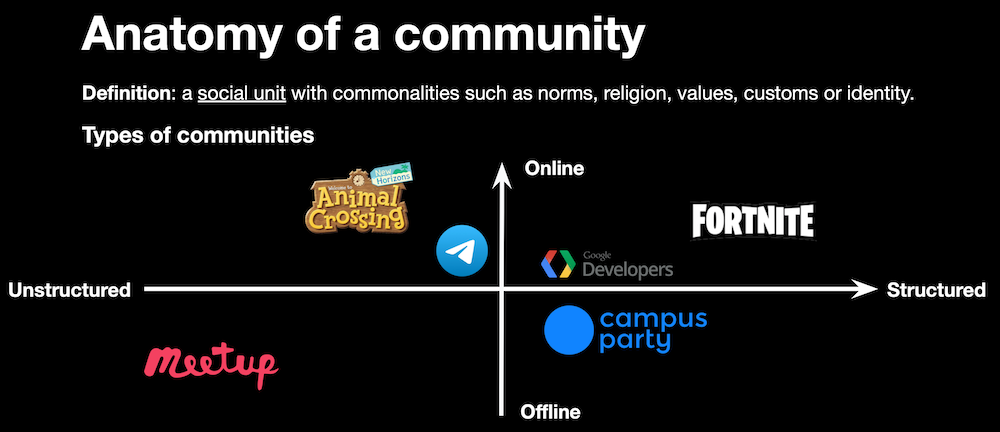
Communities can be offline or online, and can be structured or unstructured, and anything in between. Those that I experienced and described above were communities: ephemeral, virtual communities. Definitely unstructured and completely online.
As defined on Wikipedia, a community is a “social unit with commonalities such as norms, religion, values, customs or identity.” We know that communities share a single interest a meet in a specific place. Before the pandemic, that place was a co-working, an office during after-hours, a pub. Somewhere to be together and talk about the same things that everyone is interested in.
Now that the pandemic has basically erased the chance of meet in crowded places and get together with more than a dozen people, communities are meeting in virtual places, like Zoom and Google Meet. But, aside from few exceptions, it’s not ideal to be in a 50-participants Zoom videoconference and working from home has changed the time frames we usually work in. That UX Meetup on Wednesday after-hours is not an option anymore, even if it’s taking place virtually. Because the office community, the most intimate and strong community beyond the family, is ever more present.
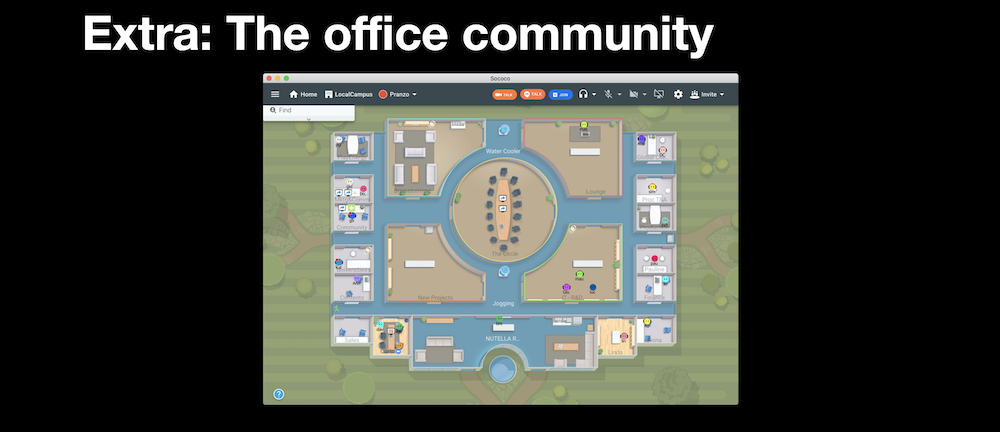
As people are learning how to interact in virtual communities, we’re starting to see a growth of communities that combine multiple approaches, using multiple tools and platforms to maintain the engagement. A community is not a meeting place anymore, it’s a way of being. What one does defines which communities s/he’s in, not the other way around. Community interests are shared across all platforms, that are just a means of best expressing different types of content.
So the sense of community, as theorised by McMillan in 1986, is changing in its meaning. The shared emotional connection, that typically varies among communities, is shared across all communities, and it’s the basic need to feel safe, to feel respected and not to feel alone. And the needs fulfilled by a community are different from one another, but with the same purpose: to be together and fight this (the pandemic) as one. And this is why people are watching Animal Talking, Gary Whitta’s talk show on Animal Crossing: they need to laugh, to not have to think about anything, to be free for even a single moment. And even watching someone throw a ball at a wall for hours is useful, because it lets people think about that. Everything to be distracted.
People are enjoying content and producing content and sharing content more than ever now, and the emotional connection that’s created when a small group of people feel close to each other just by commenting the same funny video, that’s a community. Right now, everyone is potentially a community, because that’s what the world needs now. And that’s OK.
Laugh. Watch. Enjoy. Stay safe, guys.
Recommended articles
- Compagnia tiene una riunione di prova su Animal Crossing (ma non è andata benissimo)
- Vicini ma lontani: stare insieme col multiplayer online durante la quarantena
- The Virus Changed the Way we Internet
- ‘It’s uniting people’: why 11 million people are playing Animal Crossing: New Horizons
Researches
Puoi segnalare errori in questa ricerca inviando una mail a [email protected] oppure, usando Git, facendo una pull request da qui

